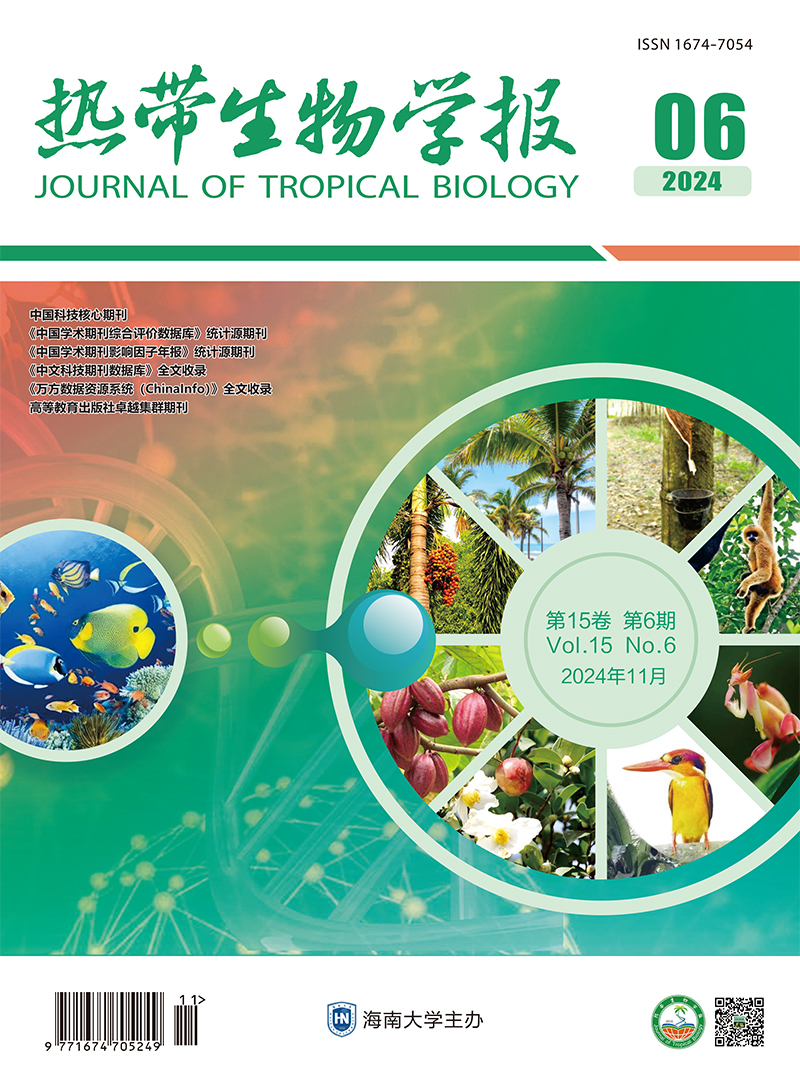|
[1]
|
GIRI C, OCHIENG E, TIESZEN L L, et al. Status and distribution of mangrove forests of the world using earth observation satellite data[J]. Global Ecology and Biogeography, 2011, 20(1):154-159. |
|
[2]
|
NAGELKERKEN I, BLABER S J M, BOUILLON S, et al.The habitat function of mangroves for terrestrial and marine fauna:a review[J]. Aquatic Botany, 2008, 89(2):155-185. |
|
[3]
|
MAROIS D E, MITSCH W J. Coastal protection from tsunamis and cyclones provided by mangrove wetlands-a review[J]. International Journal of Biodiversity Science,Ecosystem Services&Management, 2015, 11(1):71-83. |
|
[4]
|
BARBIER E B. A global strategy for protecting vulnerable coastal populations[J]. Science, 2014, 345(6202):1250-1251. |
|
[5]
|
BARBIER E B. The protective service of mangrove ecosystems:a review of valuation methods[J]. Marine Pollution Bulletin, 2016, 109(2):676-681. |
|
[6]
|
GEDAN K B, KIRWAN M L, WOLANSKI E, et al. The present and future role of coastal wetland vegetation in protecting shorelines:answering recent challenges to the paradigm[J]. Climatic Change, 2011, 106(1):7-29. |
|
[7]
|
方发之,黎肇家,桂慧颖.海南红树林现状调查与研究[J].热带林业, 2022, 50(1):42-49. |
|
[8]
|
吴后建,刘世好,贺东北,等.中国红树林监测研究进展与展望[J].湿地科学与管理, 2022, 18(1):69-72. |
|
[9]
|
张乔民,隋淑珍.中国红树林湿地资源及其保护[J].中国林业, 2005(10):13. |
|
[10]
|
ALONGI D M. Mangrove forests:Resilience, protection from tsunamis, and responses to global climate change[J].Estuarine, Coastal and Shelf Science, 2008, 76(1):1-13. |
|
[11]
|
ALONGI D M, CHRISTOFFERSEN P, TIRENDI F. The influence of forest type on microbial-nutrient relationships in tropical mangrove sediments[J]. Journal of Experimental Marine Biology and Ecology, 1993, 171(2):201-223. |
|
[12]
|
ALONGI D M, SASEKUMAR A, TIRENDI F, et al. The influence of stand age on benthic decomposition and recycling of organic matter in managed mangrove forests of Malaysia[J]. Journal of Experimental Marine Biology and Ecology, 1998, 225(2):197-218. |
|
[13]
|
COCHARD R. On the strengths and drawbacks of tsunami-buffer forests[J]. Proceedings of the National Academy of Sciences of the United States of America,2011, 108(46):18571-18572. |
|
[14]
|
马骏,付荣恕.大型底栖动物生态学研究进展[J].山东农业科学, 2010, 42(2):78-81. |
|
[15]
|
徐姗楠,陈作志,黄小平,等.底栖动物对红树林生态系统的影响及生态学意义[J].生态学杂志, 2010,29(4):812-820. |
|
[16]
|
周福芳,史秀华,邱国玉,等.深圳湾不同生境湿地大型底栖动物次级生产力的比较研究[J].生态学报,2012, 32(20):6511-6519. |
|
[17]
|
DOLBETH M, CARDOSO P G, GRILO T F, et al. Longterm changes in the production by estuarine macrobenthos affected by multiple stressors[J]. Estuarine, Coastal and Shelf Science, 2011, 92(1):10-18. |
|
[18]
|
赵小雨,蔡立哲,饶义勇,等.考洲洋人工种植红树林湿地大型底栖动物群落环境响应[J].生态学报, 2023,43(13):5505-5516. |
|
[19]
|
陈国贵,王文卿,谷宣,等.漳江口红树植物群落周转对大型底栖动物群落结构的影响[J].生态学报, 2021,41(11):4310-4317. |
|
[20]
|
史伟.海南陵水红树林湿地资源现状及保护对策[J].中南林业调查规划, 2021, 40(2):51-54. |
|
[21]
|
周细平,徐帅良,吴培芳,等.九龙江口海门岛红树林湿地大型底栖动物群落生态研究[J].应用海洋学学报, 2019, 38(1):21-29. |
|
[22]
|
李旭林,郑康振,周炎武,等.红树林恢复对潮滩表层沉积物氮素的影响[J].生态学报, 2010, 30(12):3163-3172. |
|
[23]
|
曹启民,郑康振,陈耿,等.红树林生态系统微生物学研究进展[J].生态环境, 2008, 17(2):839-845. |
|
[24]
|
张多鹏,刘洋,李正飞,等.长江上游支流赤水河流域底栖动物物种多样性与保护对策[J].生物多样性,2023, 31(8):60-72. |
|
[25]
|
张葵,周连凤,陈威,等.雅砻江下游大型底栖无脊椎动物群落结构及与环境因子的关系[J].中国环境科学, 2023, 43(4):1857-1866. |
|
[26]
|
李亚芳,杜飞雁,谷阳光,等.雷州半岛东南部海域春季大型底栖动物群落特征及其与环境因素的关系[J].南方水产科学, 2016,12(6):33-41. |
|
[27]
|
郑梓琼,唐以杰,戚诗婷,等.深圳福田红树林大型底栖动物多样性研究[J].湿地科学与管理, 2020, 16(3):69-73. |
|
[28]
|
马坤.海南东寨港红树林湿地大型底栖动物多样性的研究[D].海口:海南大学, 2011. |
|
[29]
|
陈国贵,王文卿,谷宣,等.闽三角红树林底栖软体动物共存格局及机制[J].湿地科学与管理, 2021, 17(1):9-13. |
|
[30]
|
杜飞雁,王雪辉,贾晓平,等.大亚湾海域大型底栖生物种类组成及特征种[J].中国水产科学, 2011, 18(4):877-892. |
|
[31]
|
龙诗颖,修玉娇,李瑶,等.黄河三角洲水质对底栖动物群落结构的影响[J].环境科学学报, 2022, 42(1):104-110. |
|
[32]
|
刘开珍.大亚湾大型底栖动物数量长期变化研究[D].上海:上海海洋大学, 2018. |
|
[33]
|
鲍思敏,张凯,丁城志,等.澜沧江下游补远江大型底栖动物群落结构的时空分布及其影响因素[J].湖泊科学, 2024, 36(2):536-550. |
|
[34]
|
张宇航,彭文启,彭帅,等.永定河流域大型底栖动物功能摄食类群时空分布及生态评价[J].应用生态学报, 2022, 33(12):3433-3440. |
|
[35]
|
|
|
[36]
|
张坤,崔玉洁,陈圣盛,等.长江一级支流黄柏河大型底栖动物时空分布特征及其与环境因子的关系[J].淡水渔业, 2022, 52(5):3-16. |
|
[37]
|
赵晨辉,王永生,贾胜华,等.汕头东部近岸海域大型底栖动物群落结构及其与环境因子的关系[J].海洋环境科学, 2023, 42(06):853-863. |
|
[38]
|
XU Y, DU A, WANG Z, et al. Effects of different rotation periods of Eucalyptus plantations on soil physiochemical properties, enzyme activities, microbial biomass and microbial community structure and diversity[J]. Forest Ecology and Management, 2020, 456:117683. |
|
[39]
|
吕巍巍.围垦及盐度淡化对长江口潮间带大型底栖动物影响的研究[D].上海:华东师范大学, 2017. |
|
[40]
|
孙叶,刘永,李纯厚,等.珠江口大型底栖动物群落结构特征及影响因素[J].南方水产科学, 2023, 19(5):39-47. |






 DownLoad:
DownLoad: